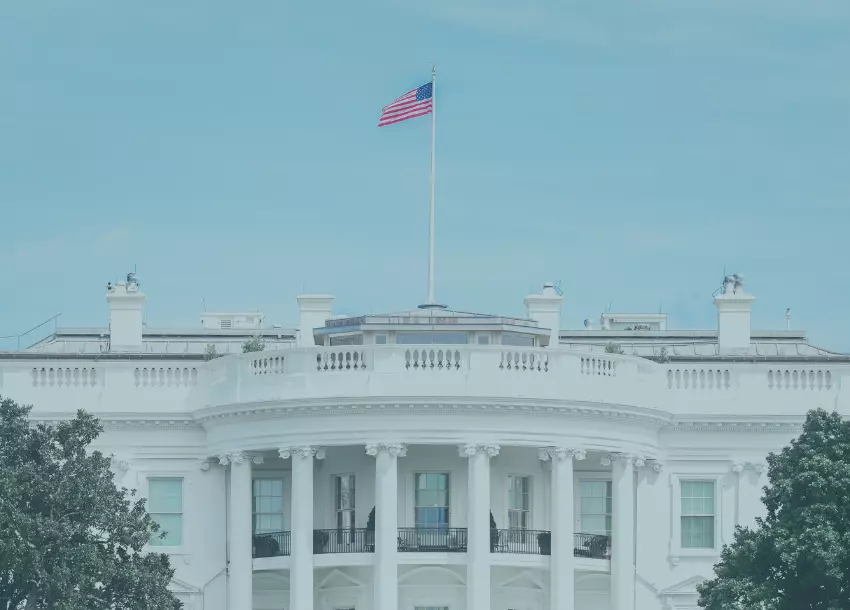The CARES Act’s Paycheck Protection Program Expands the SBA 7(a) Loan Program
For the many small and mid-size businesses impacted by the coronavirus pandemic, the recent CARES Act and other legislation adopted in earlier March 2020 offers businesses various resources for support to sustain business operations. This piece focuses on the Paycheck Protection Program expansion of the SBA 7(a) loan program, including loan amounts, eligibility, permitted uses, and forgiveness.
Many of the business-related provisions within the Coronavirus Aid, Relief, and Economic Security Act (the CARES Act), signed into law by President Trump on March 27, 2020, are fashioned to bolster a company’s ability to continue operating with as few disruptions to the workforce as possible. Among other things, the CARES Act includes provisions that allow for eligible businesses to receive forgivable loans through the Small Business Association (the SBA) by establishing the Paycheck Protection Program (the PPP), which expands upon the existing SBA 7(a) loan program. This article addresses eligibility for these loans and the subsequent forgiveness of these loans under the PPP. The covered period for purposes of applying for the PPP is February 15, 2020 – June 30, 2020. Each business’s covered period for purposes of loan forgiveness will be unique to that business, and will begin on the date of disbursement of funds. Please note that guidance is still being released by the SBA, and the Nexsen Pruet team is actively monitoring the situation.
Benefits
There has been much talk about the loan forgiveness component of these loans, however, there are additional benefits that have not received the same attention, including the following:
- The SBA will not be charging its typical Guarantee Fee at loan origination.
- The SBA will pay the lender’s origination fee.
- The interest rate on these loans is capped at 1%.
- Unlike other SBA loans, business owners will not be required to personally guarantee the loans, although the government may take action against owners if loan proceeds are used for improper purposes.
Maximum Loan Amount
Eligible participants are permitted to borrow the lesser of 2.5 times the total average monthly Payroll Costs incurred during the year prior to the date on which the loan is made (there are provisions within the Act that adjust this range for seasonal employers), or $10,000,000.00.
“Payroll Costs” include, per the Act: salary, wages, commissions, or similar compensation; payment of cash tip or equivalent; payment for vacation, parental, family, medical, or sick leave; allowance for dismissal or separation; payment required for the provisions of group health care benefits, including insurance premiums; payment of any retirement benefit; payment of State or local tax assessed on the compensation of employees. For Sole Proprietors, Independent Contractors, and Self-Employed Individuals: The sum of payments of any compensation to or income of a sole proprietor or independent contractor that is a wage, commission, income, net earnings from self-employment, or similar compensation and that is in an amount that is not more than $100,000 in one year, as pro-rated for the covered period.
Payroll Costs do not include amounts paid to employees whose principal place of residence is outside of the US, compensation over $100,000 paid to individual employees, taxes imposed or withheld under chapters 21, 22, or 24 of the Internal Revenue Code of 1986, qualified sick leave wages for which a credit is allowed under section 7001 of the Families First Coronavirus Response Act, or qualified family leave wages for which a credit is allowed under section 7003 of the Families First Coronavirus Response Act.
Eligibility
An applicant business does not have to be shut down to receive a loan – there is a presumption that the applicant business has been impacted by COVID-19. Further, please note that if you have laid off or furloughed some of your workforce, this does not impact your eligibility. It may, however, impact the amount forgiven, as described later in this article.
Eligible borrowers include any business concerns except those listed within 13 CFR § 120.110, 501(c)(3) nonprofit organizations, veterans organizations, or Tribal business concerns described in section 31(b)(2)(C) in existence on February 15, 2020. These borrowers, however, cannot employ the greater of: 500 employees; or the size standard in number of employees established by the SBA for the industry in which the business concern, nonprofit organization, veterans organization, or Tribal business concern operates. This means that some companies may be eligible even if their employee count is above 500 based on their applicable employee size standard for their North American Industrial Classification System code. All individuals employed on a full-time, part-time, or other basis are included in this count. This includes employees obtained from a temporary employee agency, professional employee organization or leasing concern.
Use of Loan
The proceeds of the covered loan may be used for:
- Payroll costs;
- Mortgage payments;
- Rent (including rent under a lease agreement);
- Utilities; and,
- Interest on any other debt obligations that were incurred before the Covered Period.
However, the four forgivable uses are:
- Payroll Costs
- Interest on mortgages (which shall not include any prepayment or payment of principal on said covered mortgage obligation)
- Rent under a lease agreement and
- Payment on utilities (covered utilities include electricity, gas, water, transportation, telephone, or internet access for which service began prior to February 15, 2020)
Forgiveness
Borrowers may be eligible to receive loan forgiveness for costs incurred and payments made during the 8-week period of the loan (beginning on the origination date) relating to the four forgivable uses outlined above so long as these contracts were in place on February 15, 2020. There is still no guidance at the time of the publishing of this article as to what “costs incurred and payments made” means, which is especially important when considering payroll schedules. Forgiveness will not exceed principal of the loan. Also, amounts forgiven will not be taxable income to the borrower, but there may be other tax implications according to IRS ruling released April 30, 2020 via Notice 2020-32.
Reduction of Forgiveness
The amount forgiven will be reduced (but not increased) due to certain changes in the workforce.
The amount forgiven is reduced by multiplying by the number obtained by the following:
The average number of full-time equivalent employees during the covered period divided by:
- Average full-time equivalent employees from February 15, 2019 – June 30, 2019; or
- Average full-time equivalent employees from January 1, 2020 – February 29, 2020.
*If a seasonal employer, the range will be February 15, 2019 – June 30, 2019.
The amount forgiven may also be reduced by the amount of any reduction in total salary or wages of any employee greater than 25% during the most recent full quarter before the Covered Period (not including any employee who received compensation of more than $100,000 annually).
If a seasonal employer, the range will be February 15, 2019 – June 30, 2019. The amount forgiven may also be reduced by the amount of any reduction in total salary or wages of any employee greater than 25% during the most recent full quarter before the Covered Period (not including any employee who received compensation of more than $100,000 annually).
If, however, a borrower has terminated employees or reduced employee pay during this pandemic, the borrower can “cure” this and remain eligible for full loan forgiveness. The Act exempts terminations or reductions made between February 15, 2020, and April 26, 2020, (30 days after enactment of the Act) when the borrower rehires or fixes the reduction prior to June 30, 2020. There is no further guidance about how new hires outside of this scenario will factor into forgiveness.
Finally, the borrower must submit an application for forgiveness and provide the requisite documentation, detailing the above. The lenders will have 60 days following the application to approve or deny the application. There is little known about what the forgiveness application will look like, but be prepared to show proof of every amount spent during the 8 week period.
If sums are not forgiven, then the loan continues with favorable terms: a maturity date of 2 years according to a recent SBA publication, an interest rate of 1% according to recent SBA guidance, and lenders are required to provide borrowers with complete payment deferment for a period of not less than 6 months (but interest will accrue during those 6 months). Further, as mentioned previously, no collateral or personal guarantee is required.
Prepare
Businesses seeking a PPP loan should gather the following documents and have ready answers to the following questions to expedite the lending process. They should also have answers to every item in the SBA Application, but be advised that their bank will likely have its own application.
- Business name, address, and point of contact
- NAICS code and number of employees
- Type of entity (general/limited partnership, corporation (S-corp, C-corp, LLC, non-profit), sole proprietorship, independent contractor, self-employed)
- Understanding your corporate structure
- Date established
- Business Certificate/License
- Are you a seasonal employer? What are your dates of operation?
- Do you have a pending SBA 7(b)(2) loan application?
- Business financial information, including federal tax returns for last 3 years
- Payroll records for prior 12-months
- For sole proprietors, independent contractors, and self-employed applicants, provide payroll tax filings reported to IRS, form 1099-MISC, and income and expense sheets.
Keep detailed records during the 8-week period of the loan of sums paid for payroll costs, mortgage interest (not principal), leases, and utilities (including electricity, gas, water, transportation, telephone, or internet access), and keep copies of checks or record of payment of these expenses. Finally, maintain meticulous documentation verifying the number of employees on payroll and pay rates during February 15, 2020 – June 30, 2020 and through the 8-week period of the loan.
Finally, the SBA has announced that it will be looking at the certifications of need provided by the borrowers. The SBA will be conducting audits of loans over $2 million (in addition to other loans as appropriate) following the lender’s submission of the borrower’s loan forgiveness application, according to the April 29, 2020, FAQ issued by the SBA. There is no further guidance at this time about what would constitute adequate need, but the SBA has stated the following in question #31 of the aforementioned FAQ:
Do businesses owned by large companies with adequate sources of liquidity to support the business’ ongoing operations qualify for a PPP loan?
Answer: In addition to reviewing applicable affiliation rules to determine eligibility, all borrowers must assess their economic need for a PPP loan under the standard established by the CARES Act and the PPP regulations at the time of the loan application. Although the CARES Act suspends the ordinary requirement that borrowers must be unable to obtain credit elsewhere (as defined in section 3(h) of the Small Business Act), borrowers still must certify in good faith that their PPP loan request is necessary. Specifically, before submitting a PPP application, all borrowers should review carefully the required certification that “[c]urrent economic uncertainty makes this loan request necessary to support the ongoing operations of the Applicant.” Borrowers must make this certification in good faith, taking into account their current business activity and their ability to access other sources of liquidity sufficient to support their ongoing operations in a manner that is not significantly detrimental to the business. For example, it is unlikely that a public company with substantial market value and access to capital markets will be able to make the required certification in good faith, and such a company should be prepared to demonstrate to SBA, upon request, the basis for its certification.
Lenders may rely on a borrower’s certification regarding the necessity of the loan request. Any borrower that applied for a PPP loan prior to the issuance of this guidance and repays the loan in full by May 7, 2020 will be deemed by SBA to have made the required certification in good faith.”
The SBA has stated that further information about the metrics and process surrounding this audit will be available shortly. Possible ramifications for a violation could be lack of forgiveness, civil, or criminal penalties, but no other information is available at this time.
This brief article does not address every nuance of the Act. Beyond PPP loans, the CARES Act offers other resources as well, including SBA Disaster Assistance, tax credits, and other business favorable elements of the CARES Act. Please reach out to one of our attorneys should you need more information or help with navigating the process.
Our insights are published as a service to clients and friends. They are intended to be informational and do not constitute legal advice regarding any specific situation.
About Maynard Nexsen
Maynard Nexsen is a full-service law firm of 600+ attorneys in 31 locations from coast to coast across the United States. Maynard Nexsen formed in 2023 when two successful, client-centered firms combined to form a powerful national team. Maynard Nexsen’s list of clients spans a wide range of industry sectors and includes both public and private companies.







